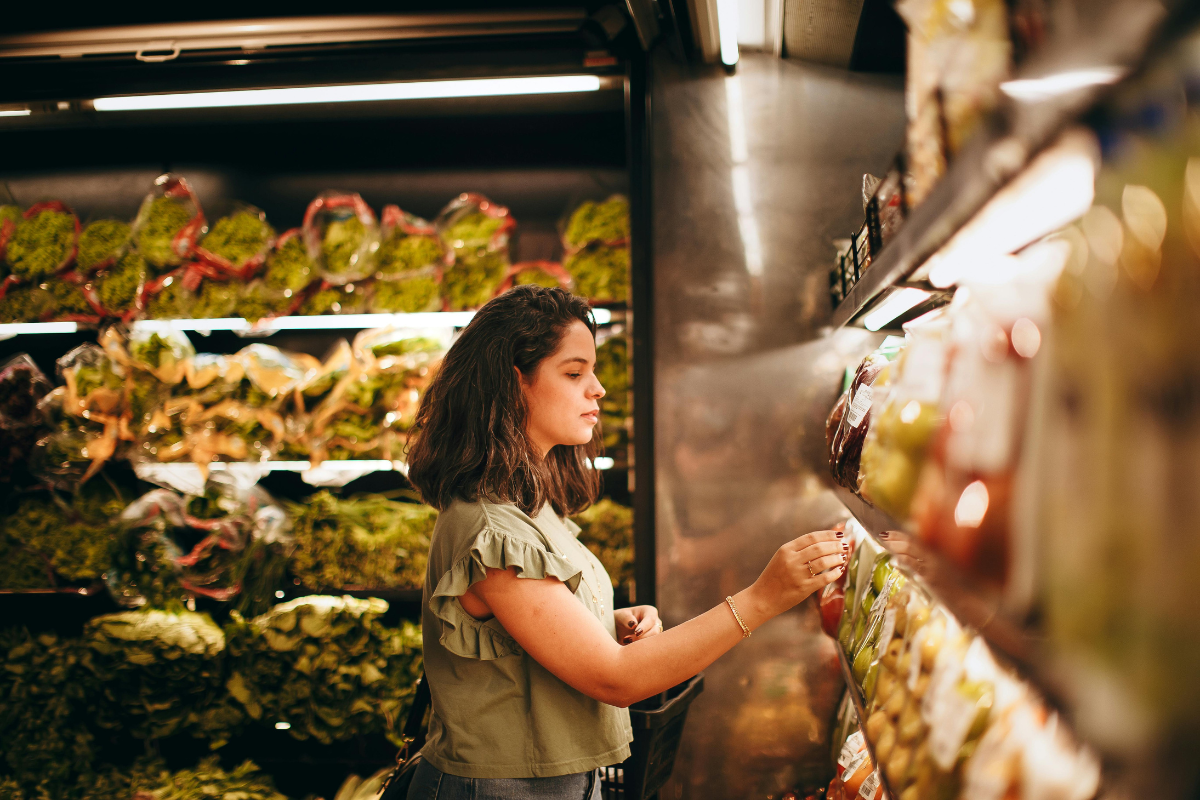Vicky Bond
14
October
2025
Since the 1950s, there’s been a significant shift in how we buy our food, moving from local grocery stores and shops to big retailers, providing a greater variety of food in one location while lowering prices.
Tesco and Sainsbury’s in the UK, Carrefour in France, Spar in the Netherlands and Delhaize in Belgium led this shift in Europe starting in the 1950s and 60s. With the growth in car ownership and an ever expanding range of products, people could now do their entire food shop in one store, saving time and money.
Today, the primary source of food for most Europeans comes from a supermarket. They are a regular part of our lives and they have more influence on what we eat than we might like to think.
Subtle supermarket strategies
Supermarkets use numerous subtle strategies to influence our purchasing decisions. For example, supermarkets know that where a product is placed can make a big difference in how well it sells - placing something at eye level is much more likely to be chosen over products that are by our ankles or high up on the shelf.
Another common strategy is to have offers on staple products that bring people into the store. Supermarkets call these products loss leaders - they sell them at a loss knowing that people will want to buy that staple at a low price but will buy other more expensive products they’re less price sensitive on.
These products include bread, milk and chicken. So people come to the store for perceived cheaper products though often leave having bought things beyond the staple products.

The variety of similar products also has an impact on how we shop. People want some variety but with too much choice they will often become overwhelmed and avoid buying the product altogether.
And it’s not just where on the shelf products are placed but also in what section. As more plant-based protein alternatives have become available, those that are positioned within the meat or dairy aisle are more likely to be picked up than those sectioned off in a vegan area.
Supermarkets’ influence spreads beyond consumers
Supermarkets have more power than just at the consumer level.
They also have power over those below them in the supply chain, particularly the food manufacturers and farmers. As the market has consolidated with far fewer supermarkets to sell to, those supermarkets can control the price they’re willing to pay, the standards they expect and the volume they want, often leaving producers with the smallest margin in the supply chain, along with unpredictability and all of the risk.
With all this power comes great responsibility.
We are at a critical point in our history where our weather patterns are becoming increasingly less predictable, with more historical devastating weather events happening every year. The climate crisis is upon us and for the sake of humanity and the planet we need to address the critical causes of climate change.
Livestock emissions account for around 20% of all greenhouse gas emissions and 62% of corn, 88% of soy and 53% of pulses grown in Europe go to feed farm animals, not people. To reduce our emissions we must reduce the numbers of farmed animals and move to more plant-rich, sustainable diets.
.png)
This is why Madre Brava is working to get supermarkets committed to protein diversification. Our recent research highlighted that rebalancing protein offerings in supermarkets to support plant-rich diets is the quickest and most cost effective way to reduce greenhouse gas emissions.
It is the only climate mitigation strategy that saves money, as plant-based alternatives are less resource intensive, using less land, water, and energy, making them cheaper to produce – and can be sourced at a lower cost to retailers.
In an environment where meat prices keep going up and, due to economies of scale, the production costs of plant-based alternatives keep going down, this shift could benefit consumers with a larger variety of cheaper plant-based meat products.
But for this to be truly successful, supermarkets need to give consumers the choice, make sure their products are placed correctly and at the right price. And we know they can do this, they have been highly successful in all the strategies for other products and it’s now time to wield that power for the protection of people, animals and the planet.
